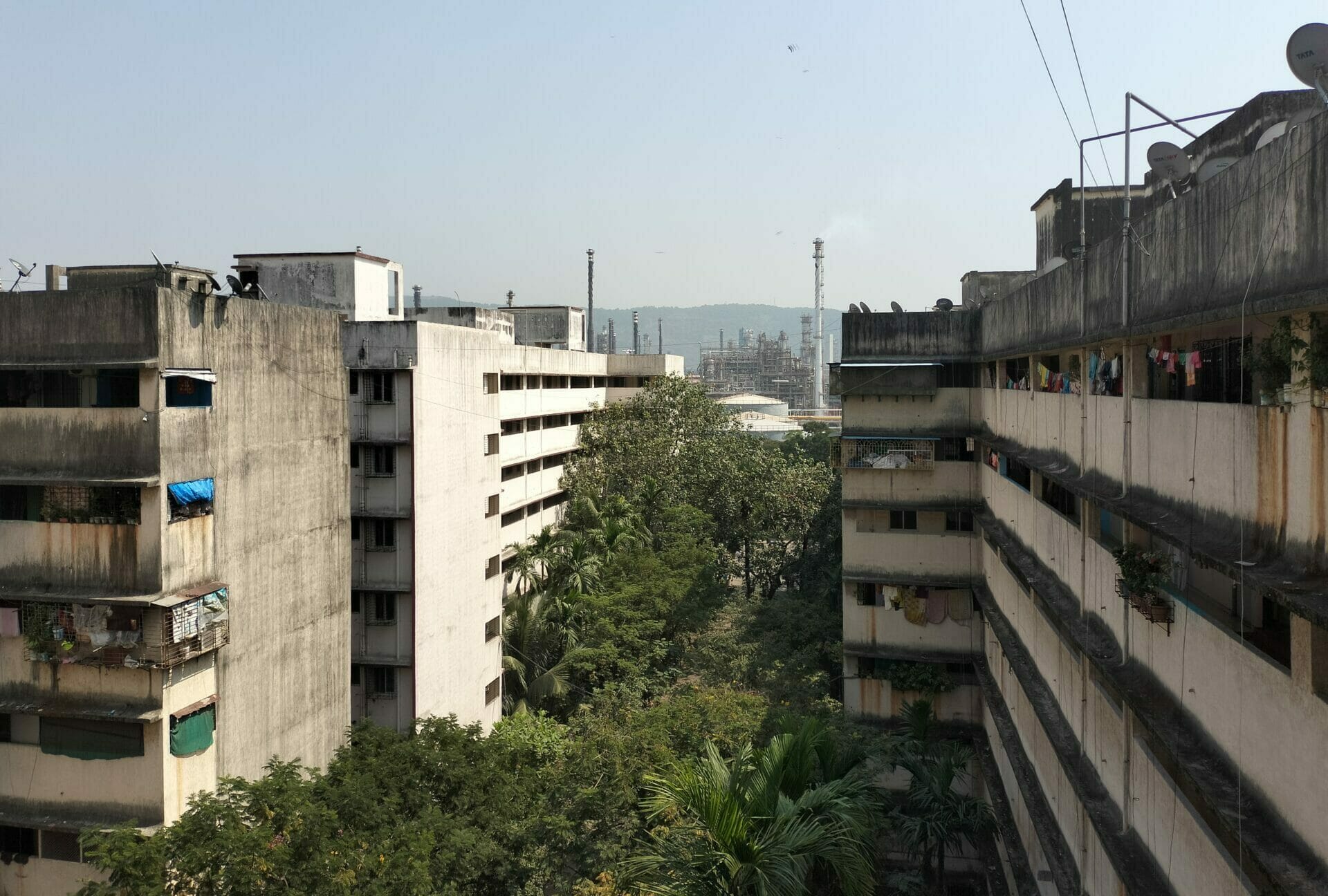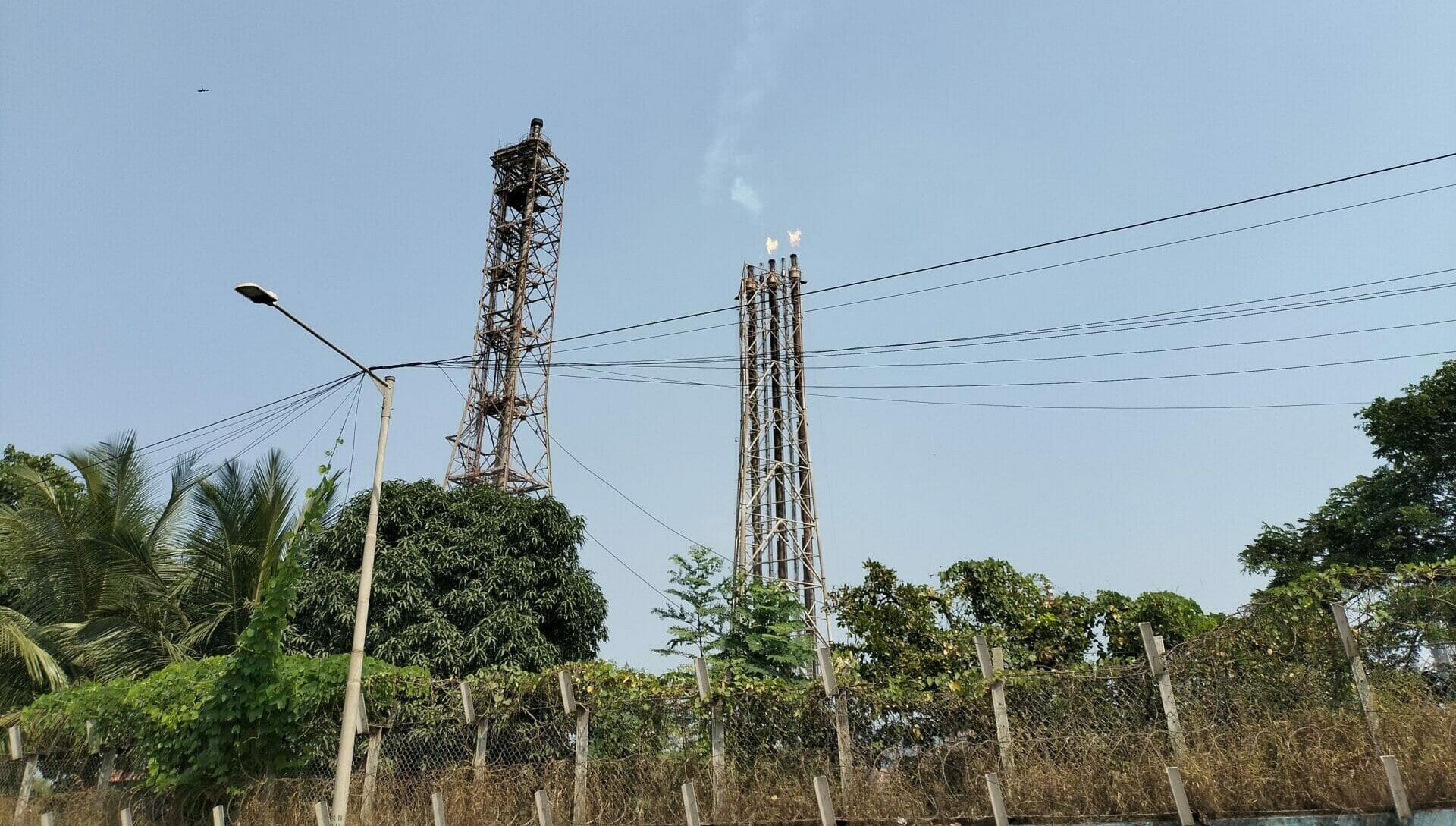In a previous article, we followed the delayed rehabilitation of the victims of a 2019 landslide in Kurar Village, Malad. After three years of living in the same place that killed 32 of their neighbours, 72 families were finally shifted to an SRA building in the area on August 22nd, 2022. That was only part of the story – 86 families were shifted within two months of the tragedy 30 km away to Mahul. This is their side of the story.
Inteyaz Ansari gestures to two buildings, Building 10 and 31, in a sea of nearly identical buildings numbered 1 to 72 in Mahul, where he and 85 of his neighbours were shifted from Malad in 2019, but is now his former residence. It was the only choice they were given after their houses were swept away by a torrent of water released by a partial collapse of a reservoir wall.
The buildings are reminiscent of old tenement housing, the common corridor overlooking a hollow clearing in the centre. The intimacy among the neighbours is still present, as Inteyaz greets every one of them like old friends.
After two years of living there, Inteyaz moved back to Malad in the beginning of this year, paying Rs 7,000 rent in a chawl. The Bombay Municipal Corporation’s (BMC) promises to shift them back extended from three months to three years, and Inteyaz was tired of waiting and asking to be relocated, like the other residents. His room here stays empty and locked.
“What could we do in that situation?” asks Prashant Pratap Darekar, another resident whose house crumpled in the flood and injured his mother. “We lost everything. It was raining and we were left in the same spot to fend for ourselves. We had to go to the nearby municipal school to sleep or spend our nights by the remaining part of the wall, afraid the same thing would happen again. Majboori thi (We were helpless).”


The distance
The biggest complaint of the rehabilitated residents is the location. Mahul is located far in the east, around 8 km from the railway stations Vadala and Chembur on the Harbour line. The vast tracts of open land and the road to and from are sparsely crowded indicating how far it is from bustling, congested Mumbai.
Most of Mahul’s population is due to the mass of Mumbai Metropolitan Region Development Authority (MMRDA) buildings named Eversmile Complex, spread over 16.15 hectares and meant to house 80,000 people. They are far from being filled. Just last month says Inteyaz, a new set of families moved in.

The distance from commercial centres means there are few jobs to be found. Many of the residents still rely on the jobs they had at the time of the landslide, with no choice but to travel daily to Malad. The journey is long and tiring.
“I leave home at 8 in the morning and reach work by 10,” says Ashish Vishawakrma, who works as a carpenter. He takes the 45-number bus to Dadar and then switches to the train to Malad, as do his brother and another neighbour, Prakash Jayaram Bane, who are electricians. The round trip costs them Rs 60.
Others like Prashant lost their jobs in the lockdown and are still on the hunt for a replacement, lucky if they happen to find odd jobs to last them a few days occasionally.
But if the men still in possession of a job continue to do the four-hour commute every day, the women have almost entirely stopped. Once domestic workers, imitation jewellery makers, etc, they are now without work. They cannot travel so far, they say, due to their age, health and other responsibilities.

Read more: Three years after the landslide in Malad, residents get rehabilitation
No work, no play
It’s not just places of work that are far. Good schools, affordable markets and hospitals are also a distance away, adding kilometres to everyday life.
There is a makeshift BMC school in the area, but many residents say it isn’t maintained or developed well – the teachers are absent often, and the quality of teaching is not very good. The schools in the nearby Vadala are too expensive for many and buses are not always available, forcing many parents to drop by and pick up their kids 30 minutes away.
“I never kept my children away from me even for a day,” says Pratiksha Prakhash Bane. “But after the tragedy, I didn’t want the life of the only child I have left to be ruined. So I sent my daughter to stay at her mama’s (uncle’s) house in Jogeshwari, where she is finishing college.”

Industrial neighbours and the impact on health
All of these points were weighing heavy on Inteyaz’s mind at the start of this year. His children were nearing schooling age, and he had travelled to Malad for work every day for two years, except when the lockdown stopped him. However, the worst impact was on his asthmatic father’s health, which had been quickly degrading since their move. It was no mystery as to why.
Just a 15-metre width road across from the Eversmile Complex is the Bharat Petroleum Corporation Limited refinery. Besides, it is other petroleum refineries, storage tanks for hazardous chemicals, thermal power plants and other industries, which release a cocktail of chemicals like benzene, toluene, xylene, etc, into the atmosphere.
The effect of this is not only apparent in the findings of the Maharashtra and Central Pollution Control Board (CBCP), National Green Tribunal (NGT) and more, but also to the residents, who complain of mosquitos, trouble with breathing, recurring illnesses and toxic water.
“If you let it rest overnight, a film of oil collects on top,” says Ashish. The effect is immediate, especially in the first days of drinking it, leading to stomach aches and diarrhoea. All of them resort to boiling it before drinking.

Going back, getting out
Three months after the landslide – and one after the new residents had set foot in Mahul – the Bombay High Court passed a ruling that would have seen the residents never move to the other end of the city. It put an end to more project-affected peoples (PAP) being shifted to Mahul and ordered the BMC to pay rent and security deposit to the families already present till they’re relocated. The evidence demanded as much, it concluded.
Three years on, work on the order has just begun. This February, 584 families were shifted to Appapada, Malad. Prashant and the rehabilitated residents continue their efforts with the help of the housing rights organisation Ghar Bachao Ghar Banao Andolan (GBGBA), and through their own Jay Bhavani committee, which has met officials and politicians, including Chief Minister Devendra Fadavnis, only to receive promises, yet to be delivered.
That their remaining neighbours who refused to accept the house in Mahul have been finally rehabilitated in Malad has given the residents’ relocation dreams some hope. But how long it will take, and the irreparable damage the environment will do till then, they cannot tell.